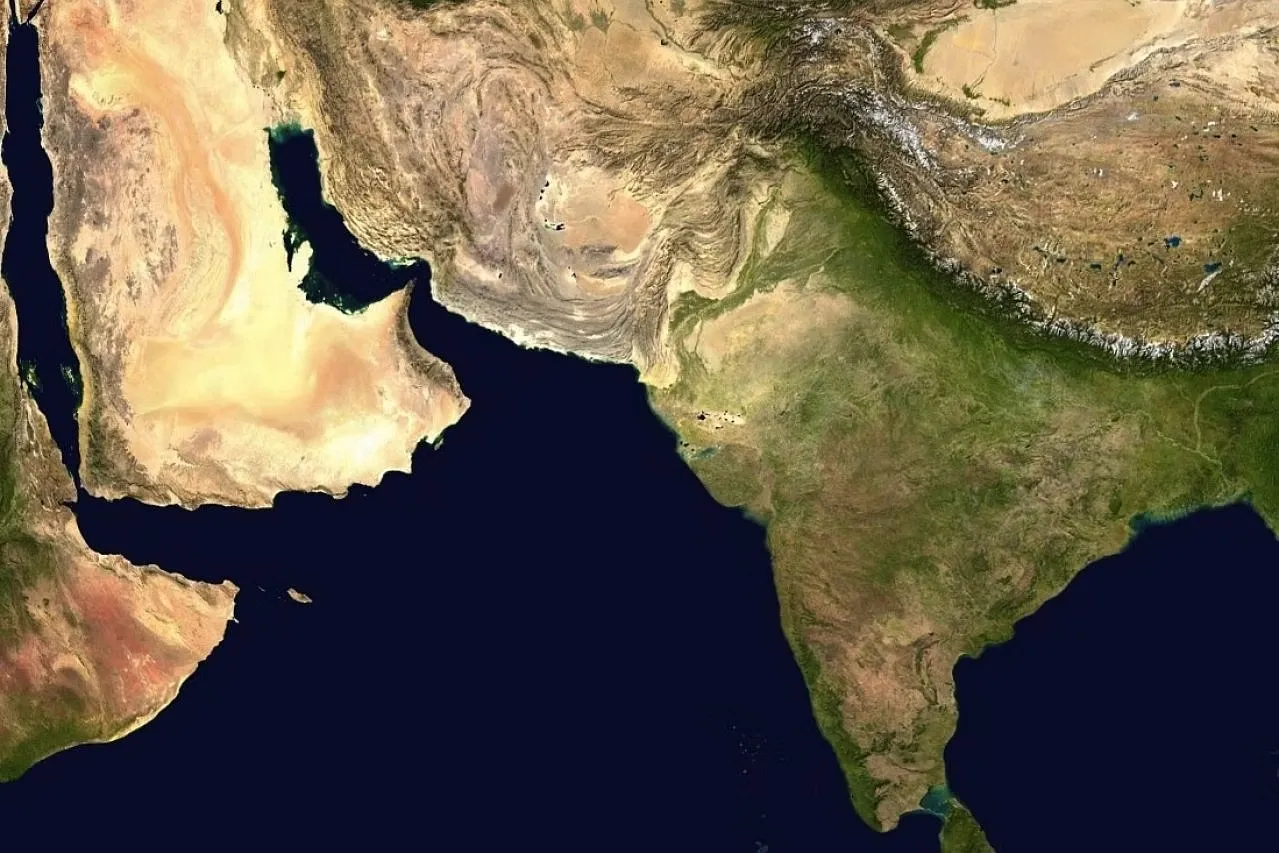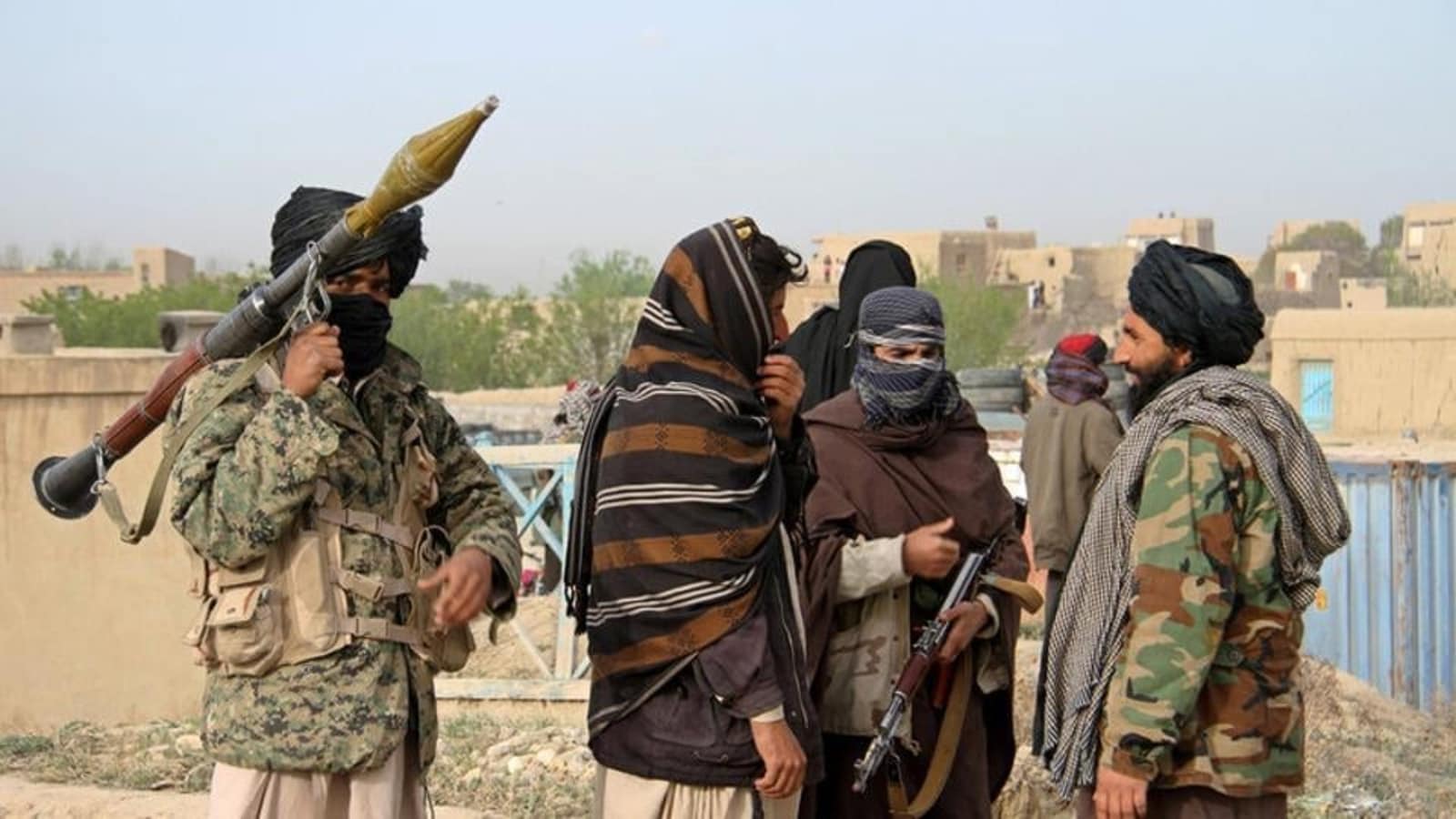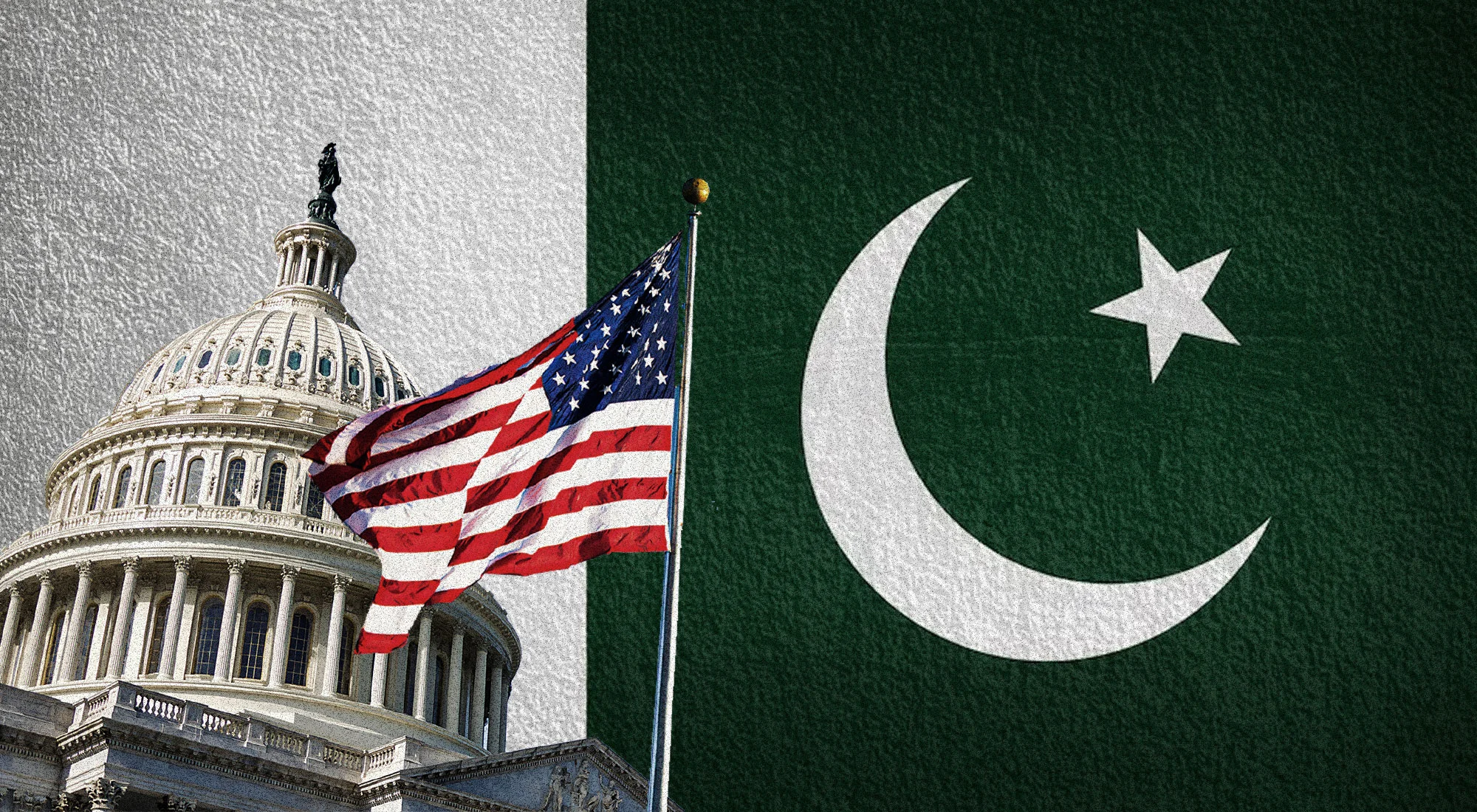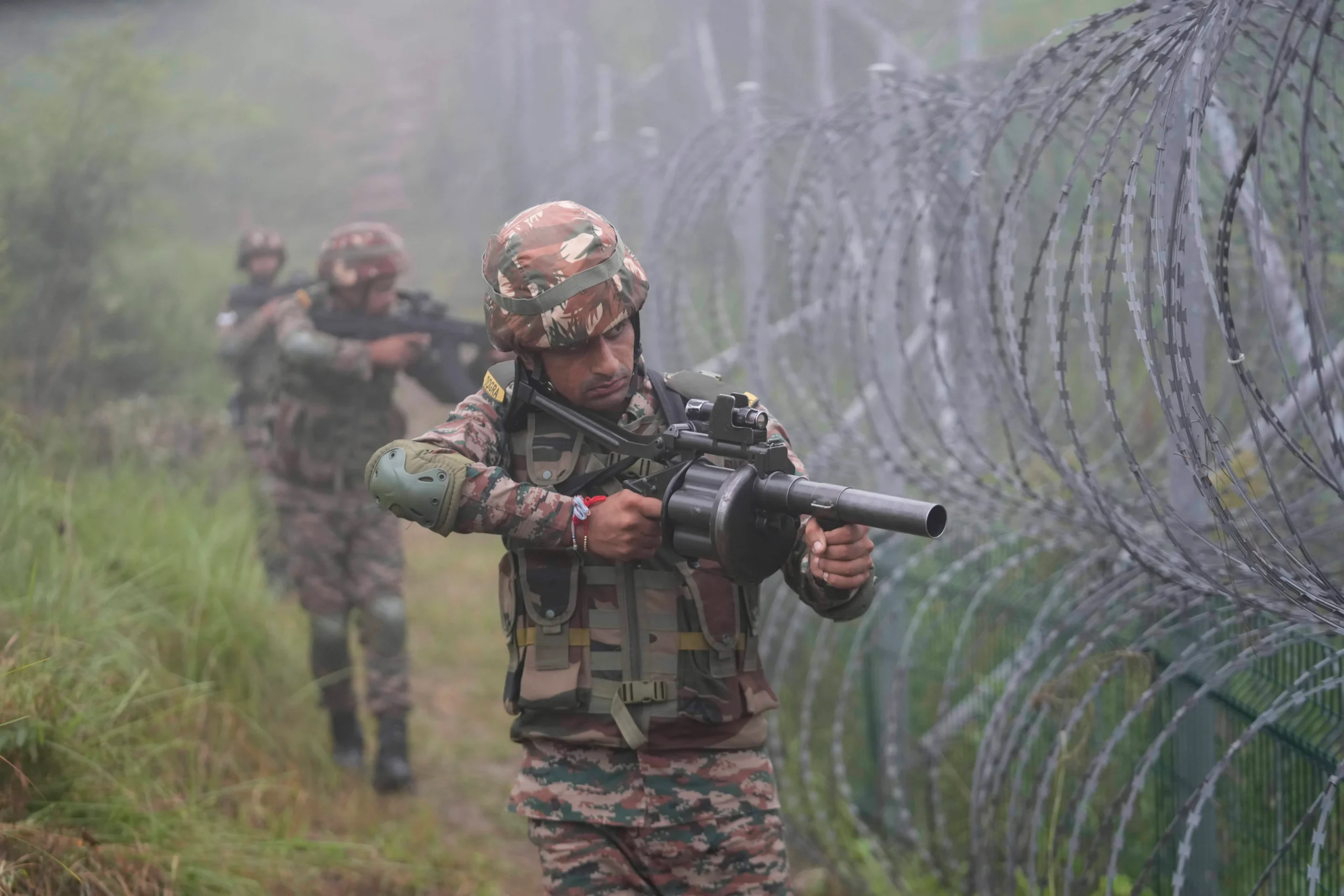India and Pakistan gained independence in 1947. They inherited an almost identical economic legacy of underinvestment and neglect. Both countries ranked among the world’s poorest nations. Pakistan did not receive its full share of wealth and resources, so it faced relatively more problems. Out of 921 industrial units in undivided India, Pakistan received only 34. Soon after independence, Pakistan was struggling with economic challenges. On January 5, 1948, LIFE magazine reported that Pakistan’s economy was on the verge of collapse. Contrary to the above assessments, Pakistan’s economy witnessed an average growth rate of 6% during the first four decades of its independence. In contrast, India lagged behind with only a 4% average growth rate.
However, with the end of Cold War, the situation reversed.
India surpassed Pakistan in economic growth rate and became one of the fastest-growing economies in the world over the past three decades. Today, India is the 5th largest economy in the world.
In 1970, Pakistan’s GDP per capita was US $226, while India’s was US $112. By 2022, Pakistan’s GDP per capita had risen to US $1,400, whereas India’s had reached US $2,490.
India’s foreign reserves stand at US $554 billion, compared to Pakistan’s US $8 billion.
We can divide the history of economic progress in Pakistan and India into two distinct periods: from 1947 to 1990 and from 1991 to 2023.
It will be very interesting to assess the impact of changing global order and strategic realignments vis-à-vis economic growth of both Pakistan and India in this period.
Impact of Geopolitics on Pakistan’s Economic Trajectory
Soon after independence, Pakistan joined the ‘US Camp’ by becoming a member of CENTO and SEATO. Despite initial economic hardships, Pakistan’s economy followed an upward trajectory.
This progress can be attributed to the flow of financial aid, especially from the US, West, and Gulf countries, along with better governance.
From 1958 to 1963, Pakistan experienced major economic growth. This growth led to infrastructure building, including dams, canal systems, power stations, industrialization, and land agricultural reforms.
Pakistan achieved an economic growth rate of almost 10% during this period. Two wars with India and the separation of East Pakistan, along with the ‘nationalization‘ of industries, negatively impacted Pakistan’s economic growth during the 1970s. Despite these challenges, Pakistan began recovering from its weak economic performance starting in the 1980s. This is the time when Pakistan was the front-line state supporting Afghan Jehad with full support of the Americans.
In economic terms, Pakistan’s recovery can be attributed to the denationalization of industries in 1977 and increased remittances from the Middle East. The completion of the Tarbela Dam boosted the agricultural sector. During the Soviet invasion of Afghanistan, the US and West provided direct financial assistance to Pakistan as an ally. Consequently, Pakistan managed to maintain a steady upward growth until the late 1980s.
After the Cold War
With the end of Cold War (early 1990s), things started to change, resulting in a downward trend of Pakistan’s economy. During the 1990s, under democratic rule, Pakistan became the most sanctioned ally of the United States. The economic situation further deteriorated after the nuclear explosions of 1998. However, geopolitics took another turn after the incident of 9/11. Pakistan was termed as a non-NATO ally by the US in its Global War on Terror (GWOT). Interestingly, Pakistan’s economy showed an upward trend between 2003 and 2006. During this period, it had an average growth rate of more than 6%.
As soon as Pakistan’s relevance to US vis-à-vis Afghanistan diminished, Pakistan witnessed a deteriorating security situation, especially in FATA and Swat, and a rise in militancy which restricted foreign investment, resultantly FDI decreased.
India’s Alternative Route in its Economic Journey
This deterioration of economy became more prominent once the US left Afghanistan which continues even today. Like Pakistan, India’s economic growth can also be divided into two phases, 1947-1990 and 1990 to date. During the Cold War, India proclaimed itself as one of the leading countries of the Non-Aligned Movement. However, realistically, India remained in the Soviet Camp.
During this period, the Indian government adopted an economic model with a protectionist trading strategy and a license regime. This model constrained economic growth. The average economic growth rate of India during this time was around 3-4%. High levels of regulation and protection for the industrial sector contributed to the slow performance of the Indian economy. Inefficient agriculture and low trade ratios also played a role. Before 1990, the main sources of capital inflows to India consisted mostly of foreign aid from the US and Russia, commercial borrowings, and remittances. India faced a serious balance of payment crisis in the 1990s and approached IMF for a bailout.
Adopting the Western Way
Interestingly, as soon as the Cold War ended, India abandoned its centralized economic policy. It shifted towards opening up to the US and the West for greater political and economic gains. Indian economic reforms included Liberalization, Privatization and Globalization (LPG). Indian export/ import diversified its outreach to almost all parts of the world. India liberalized trade, lowered tariffs, deregulated industries, abridged controls on foreign trade and investment, and privatized state-owned enterprises, thus, making it convenient for local companies to grow, which led to more foreign investment. Reforms were successful because they opened new markets for Indian businesses, increased their competitiveness, and ultimately resulted in a higher rate of economic growth for India as a whole.
Result of India’s outward-oriented policy and integration into the global economy proved fruitful and aided the country’s accelerated economic growth which continues to-date.
It is important to note that same India which performed below par vis-à-vis its economic potential in first 40 years, started performing better as soon as it got a favourable geopolitical wind. India enjoyed uninterrupted democracy for 75 years, whereas Pakistan witnessed a turbulent political period where military and civilian rule changed hands many times. However, Pakistan’s economic growth always remained encouraging during the periods (irrespective of type of regime) when it was geopolitically relevant to the US/ West during the Cold War and later as well.
Foreign Support
In other words, economic growth of Pakistan was always less dependent upon indigenous reforms, measures, policies, capacities, etc., and relied primarily upon external monetary support, which was available during periods of SEATO, CENTO, Afghan Jehad, US GWOT, etc. These were the times when Pakistan was positively relevant to the US/ West in the global order. India, at the same time, despite its ‘democratic’ credentials kept struggling in economic terms. The situation did not change until early 1990s.
However, as soon as the Cold War ended and the US changed its strategic priorities ‘suddenly’ finding a new ‘democratic’ ally in South Asia, Indian economy started showing signs of recovery and openness. Indian nuclear explosions of 1998 and later entry into Nuclear Supplier Group, etc were not meant for Pakistan but primarily to announce India’s arrival against China in the evolving global order as the ‘net security provider’ on behalf of the US. Is it a coincidence that as soon as India became positively relevant to the US, its economy started showing trends of upward growth? It also implies that Indian economic trajectory, like Pakistan’s or any other developing country remains largely dependent upon its strategic alignment or relevance to the leading superpower of the world.
Conclusion
Notwithstanding above, India was able to develop relatively robust domestic state institutions due to its continued democratic dispensation for 75 years. As a result, Indian economy showed very quick recovery as soon as it received favourable geopolitical environment. Contrarily, Pakistan could not develop strong state institutions due to turbulent political dispensation. As a result, Pakistan could not fully convert a relatively favourable geopolitical environment of Cold War into a more robust and sustainable economic model. In fact, contemporary unfavourable geopolitical environment has really exposed the domestic institutional inadequacies resulting in weak governance, socio-economic fragility, unbridled media, weak civil-military relations, etc.
Therefore, Pakistan must focus on building institutions if it wants to sustain through this difficult time of history where leading superpower (US) has different strategic priorities in South Asia. Pakistan must recognize its immense geopolitical and economic potential while safeguarding its key national interests to wade through these tough times without inflicting a major self-harm. Learning lesson from the past, state institutions like military, bureaucracy and judiciary, etc apart from other important institutions need to be working in their respective spheres and in harmony for achieving socio-economic well-being of a common Pakistani. Moreover, Pakistan’s politico-military leadership must continue to discover and explore geopolitical and geo-economic avenues to remain positively relevant to contemporary world powers in an era of changing global order.
The views expressed in this article are the author’s own. They do not necessarily reflect the editorial policy of the South Asia Times.






